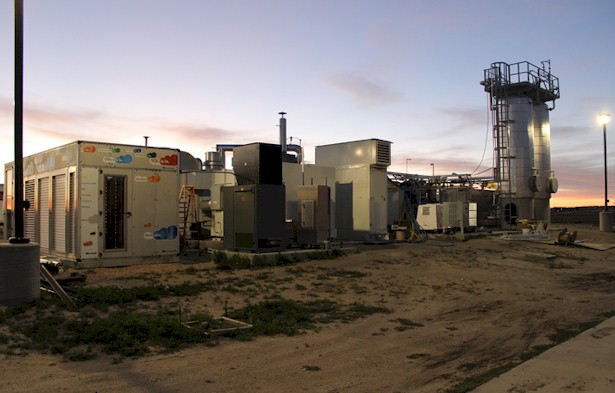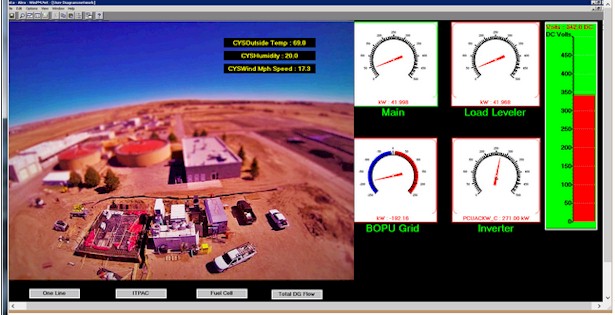Wyoming Waste Powers Microsoft Datacenter

As efforts to make datacenters more energy efficient hit a wall, Microsoft is taking a new approach: using methane biogas from an adjacent wastewater treatment facility along with fuel cell technology to move a prototype datacenter in Wyoming off the grid.
Microsoft teamed with the Energy Management unit of German engineering giant Siemens and state officials in Wyoming to get the zero-emission datacenter up and running. A "cord cutting" ceremony took place today in Cheyenne, Wyoming as part of a planned $274 million expansion of Microsoft's datacenter infrastructure in the western state.
The software and cloud giant claims the facility is the nation's first zero-carbon datacenter powered by the byproducts of wastewater. The datacenter's fuel source is the biogas methane produced at a nearby wastewater treatment facility. Fuel cells provided by another partner, Connecticut-based FuelCell Energy, convert the biogas into electricity used to provide continuous power the Microsoft datacenter.
The distinctive odor of the municipal wastewater treatment plant is converted to power via an electrochemical reaction that generates electricity and heat, the partners explained. In the absence of combustion, no emissions are released using the process.
Siemens, meanwhile, provided the energy management software and power monitoring hardware built into the modular, shipping-container-sized datacenter. Since the datacenter must run 24 hours by 7 days, the Siemens equipment is used to ensure the fuel cells deliver reliable base load power for continuous electricity and heat. It also monitors on-site power production.
The partners said they would also reap power savings by cutting electrical transmission and distribution costs.
According to Weather.com, Cheyenne's average high temperature in July is 83 degrees F. While the zero-emission datacenter includes fans, the partners provided few details about cooling. Siemens did say its environmental controls would "manage air temperature, flow, and humidity." Circuit breakers used to deliver power to the Microsoft servers also would monitor the power supply in the event of low or high energy levels in the datacenter container.
The set-up ensures "the data center is insulated from blips and power outages," Microsoft said.
Microsoft added the zero-emission datacenter would not only operate entirely off the local power grid but also send surplus power back to local utilities. Using the Siemens power monitoring system, the datacenter's fuel cell plant is expected to produce more electricity than its needs to operate the facility: It will produce 250 kilowatts of "renewable power" but the datacenter would use only use only about 100 kilowatts, according to Siemens. Additional power will be redirected to the wastewater facility.
Whether Microsoft and its partners can scale their off-the-grid datacenter remains to be seen. If so, municipal wastewater treatment facilities could become a magnet for datacenter construction. Initially, those datacenters would be modular affairs housing only a single row of servers, according to video released by Siemens.
The expanding Microsoft datacenter in Cheyenne is at the northern end of a string of datacenters currently springing up between the Wyoming capital and Denver, Colorado to the south.
A local coalition provided $1.5 million grant to help fund the $7.6 million datacenter. Microsoft is covering the remaining construction costs. The company has so far invested nearly $500 million in a datacenter complex located near the National Center for Atmospheric Research's Wyoming Supercomputing Center in Cheyenne.
Related
George Leopold has written about science and technology for more than 30 years, focusing on electronics and aerospace technology. He previously served as executive editor of Electronic Engineering Times. Leopold is the author of "Calculated Risk: The Supersonic Life and Times of Gus Grissom" (Purdue University Press, 2016).












